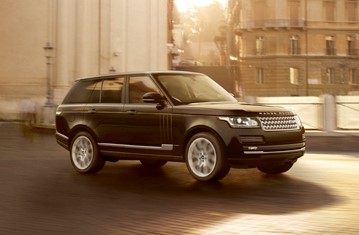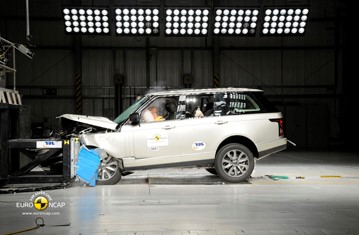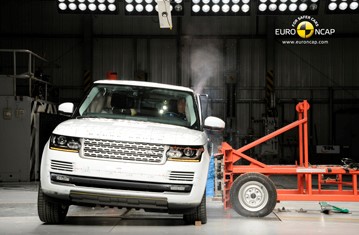Find more information in the General Comments section of the assessment
Find more information in the Rating Validity tab of the assessment
- See More
- See More
- See More
- See More
- Good
- Adequate
- Marginal
- Weak
- Poor
 Passenger
Passenger
 Driver
Driver
 Front Seat
Front Seat
 Car
Car
 Pole
Pole
- Good
- Adequate
- Marginal
- Weak
- Poor


Passenger
outboard
center
Fitted to the vehicle as standard
Not fitted to the test vehicle but available as option
Not Available
Based on dummy readings in the dynamic tests, maximum points were scored for protection of the 18 month infant. In the frontal impact, forward movement of the 3 year dummy, sat in a forward-facing restraint, was not excessive. In the side impact, both dummies were properly contained within the protective shells of their restraints, minimising the likelihood of head contact with parts of the car interior. The passenger airbag can be disabled to allow a rearward-facing restraint to be used in that seating position. However, inconsistent labelling may make the status of the airbag unclear to the driver and the system was not rewarded. The dangers of using a rearward-facing child restraint in the front passenger seat without first disabling the airbag are clearly marked in the car.
- Good
- Adequate
- Marginal
- Weak
- Poor

Head Impact 16.6 Pts
Pelvis Impact 0.0 Pts
Leg Impact 6.0 Pts
The bumper scored maximum points for the protection offered to pedestrians' legs. However, the front edge of the bonnet was poor in all areas tested and did not score any points. In those areas where the bonnet might be struck by the head of an adult or that of a child, the bonnet provided predominantly good protection.
- Good
- Adequate
- Marginal
- Weak
- Poor
| System Name | DSC | |
| Performance | ||
| Vehicle Yaw Rate @ COS + 1.00 s | 1.86% | meets ECE requirements |
| Vehicle Yaw Rate @ COS + 1.75 s | 1.05% | meets ECE requirements |
| Lateral Displacement @ BOS + 1.07 s | 3.11 m | meets ECE requirements |
| Applies To | All seats | ||
| Warning | Driver Seat | Front Passenger(s) | Rear Passenger(s) |
| Visual | |||
| Audible | |||
|
|||
Electronic stability control is standard equipment on all variants and passed Euro NCAP's requirements. A seatbelt reminder system is standard for the front and rear seats. A driver-set speed limitation device is also standard but did not meet all of Euro NCAP's requirements and was not rewarded.
- Specifications
- Safety Equipment
- Videos
- Rating Validity
Specifications
Tested Model Range Rover 3.0 TD 'Vogue', LHD
Body Type - 5 door hatchback
Year Of Publication 2012
Kerb Weight 2313kg
VIN From Which Rating Applies - all Range Rovers of the specification tested
Class Large SUV
Safety Equipment
Note: Other equipment may be available on the vehicle but was not considered in the test year.
Fitted to the vehicle as standard
Fitted to the vehicle as option
Not fitted to the test vehicle but available as option
Not Available
Not Applicable
Videos
Rating Validity





Find more information in the General Comments section of the assessment
 Share
Share









The Range Rover remained stable in the frontal impact. Dummy readings indicated good protection of the knees and femurs of both front seat occupants. Range Rover showed that a similar level of protection would be available to occupants of different sizes and to those sat in different positions. Protection of the passenger dummy was good in all areas in the frontal test. In the side barrier test, maximum points were scored with every body region being well protected. In the more severe side pole test, dummy readings of rib compression indicated marginal protection of the chest, with good protection of other body regions. The seat and head restraint provided marginal protection against whiplash injuries in the event of a rear-end collision.